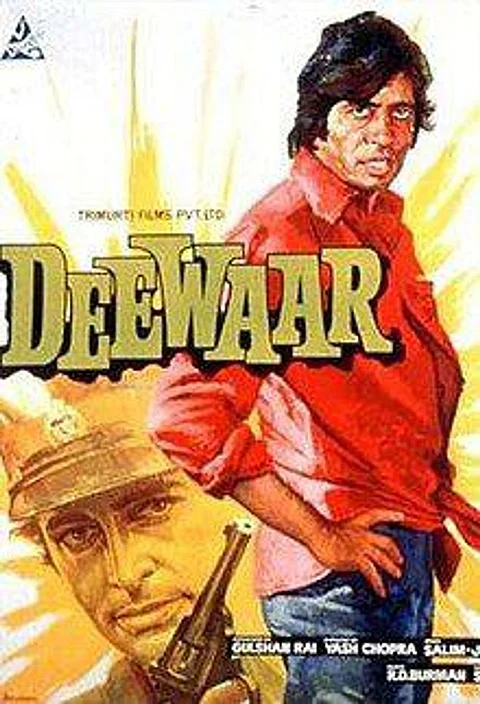After all the devotion of Nirupa Roy shown in Shiva, she gets a criminal son and a police officer son at war. Pintrest
Also Read: 10 Greatest Udit Narayan Hits of All Time
So the question that arises is that does Amitabh Bachchan visit the Shiva Temple because Shradda had finally developed within him? Aswering the same Sandeep Balakrishna in his article for The Dharma Dispatch writes- It's clear that that isn't the case. He goes there because it's his desperate attempt and prayer to save his ailing mother from dying. So when Amitabh Bachchan's character pleads with Shiva, "don't punish my mother for my sins," and we place the whole thing in the context of the entire film, the impact is like an ideological sledgehammer. Shiva is a punishing God who never heeds Nirupa Roy's lifelong prayers while 786/Allah is a protecting God. As we've seen earlier, it is only Billa No.786 that repeatedly saves Amitabh Bachchan from certain death. It is only when he loses Billa No.786 that he is fatally shot and eventually dies. In other words, he loses Allah's protection. And where does he die? Precisely in the selfsame Shiva Temple.
Sandeep Balakrishna in his article for The Dharma Dispatch continues to explain that the downfall of Hindi cinema began the day it transmogrified into Bollywood. There was a lull after the end of the Salim-Javed and Angry Young Man and anti-establishment movie era. That lull was filled by the rich and entitled dynasts in Hindi cinema who transformed it into Bollywood. Today, Bollywood has no connection with either India or with reality itself. Consequently, over the last decade or so, it has become artistically barren and increasingly relies on perversion to hawk its wares. It remains to be seen who can fill the vacuum. Scoring ideological points via cinema has brought Hindi cinema to this abyss. Relying on the finest traditions of Indian and classical aesthetics might help.


